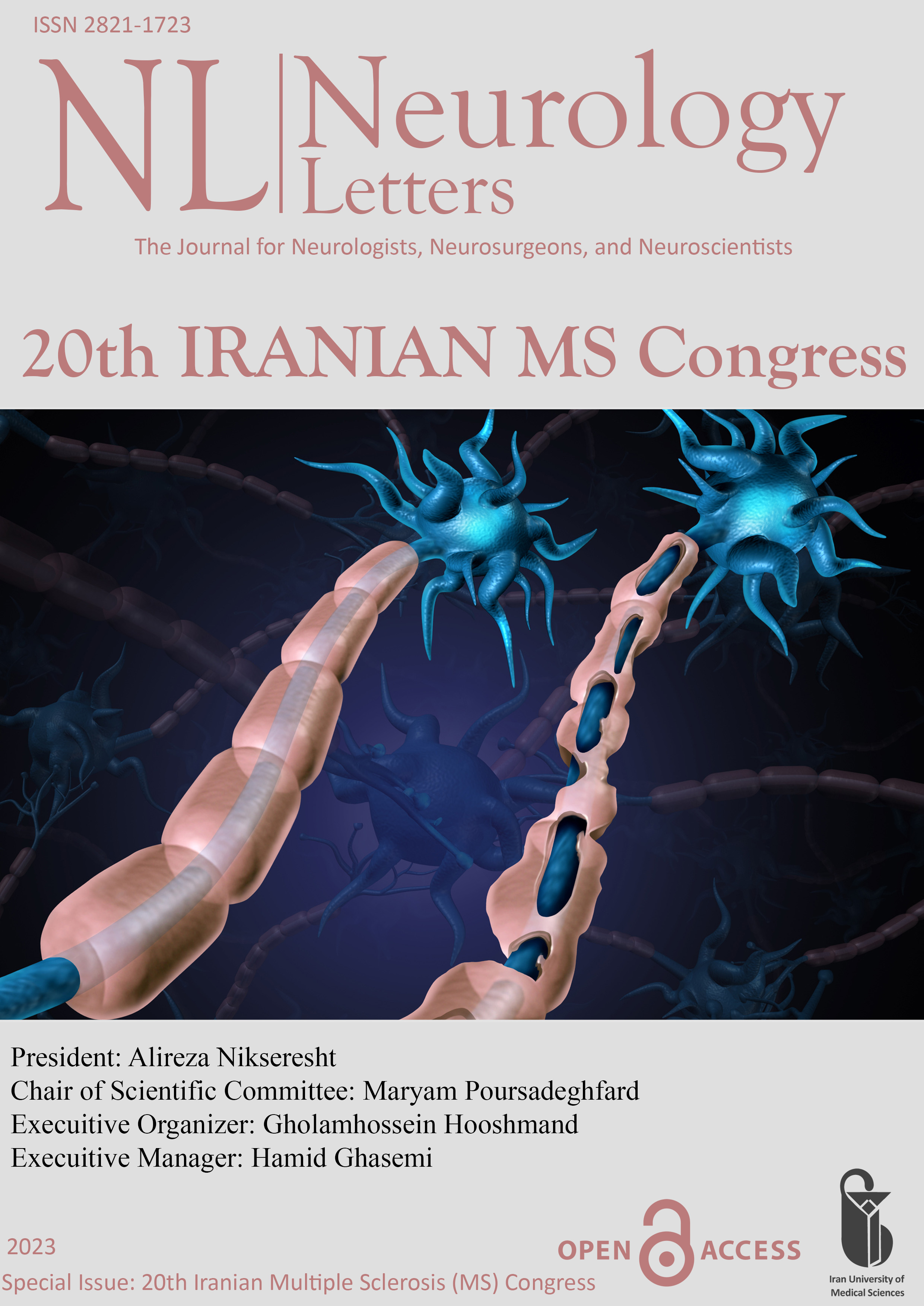A middle-aged woman with history of Multiple sclerosis presented with sub-acute encephalopathy (ORP-58)
Document Type : Oral Presentation
Author
Neurology department, Imam Khomeini Hospital Complex, Tehran University of medical sciences
Abstract
Introduction: The correct diagnostic approach and paying attention to clinical and imaging red flags for multiple sclerosis are necessary to evaluate patients suspected for MS attack due to the wide range of its differential diagnoses.
Case presentation: Our patient is a 58-year-old woman known case of MS since 13 years ago, who was diagnosed with right optic neuritis in 2010 and typical demyelinating lesions in brain and cervical MRI. There was a history of advanced MS in her sister. The patient was first treated with Cinnovex, and following clinical & imaging disease activity, her treatment was escalated to Rituximab from 2019.
She was referred to MS clinic because of sub-acute progressive headache, nausea and vomiting, followed by imbalance, cognitive problem & drowsiness from 1 month before. The patient was not febrile during this period. On admission disorientation, bilateral papilledema, decreased gag reflex, asymmetric quadriparesis (Left>Right), spasticity & hyperreflexia was noted & she was unable to walk.
Considering the progressive encephalopathy and history of Anti CD20 treatment, imaging was performed for the patient with high suspicion for superimposed infection or neoplastic lesions. Brain MRI showed extensive confluent abnormal white matter signal intensity in both centrum semiovale crossing splenium of the corpus callosum with extension to midbrain & right side of pons (more dominant on right side), with mild mass effect & midline shift. Also, patchy enhancement & diffusion restriction was evident at parts of lesions. Regarding atypical clinical & imaging features for demyelinating attack, deep and periventricular location of the lesions, atypical patchy enhancement and spreading through the splenium of corpus callosum, diagnostic biopsy was performed. Pathology & IHC assessment confirmed high grade B cell lymphoproliferative disorder consistent with diffuse large B cell lymphoma.
Clinical Lesson: Superimposed infection or neoplastic comorbidity should be considered in any MS patient under treatment who presents with clinical and/or MRI red flags. This is especially true in patients who receive potent DMTs.
Keywords
 Neurology Letters
Neurology Letters
